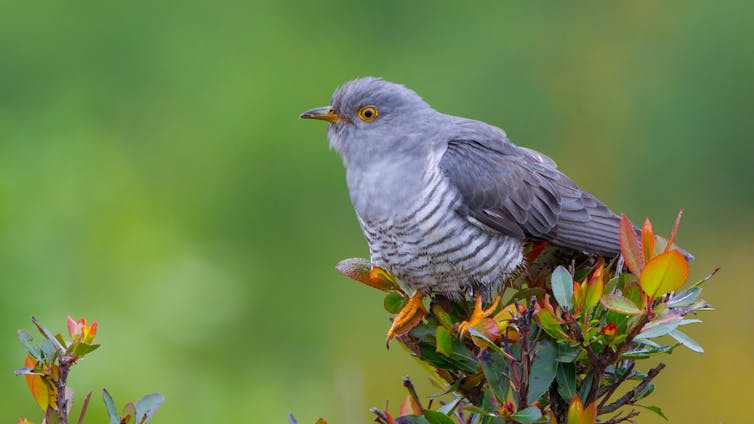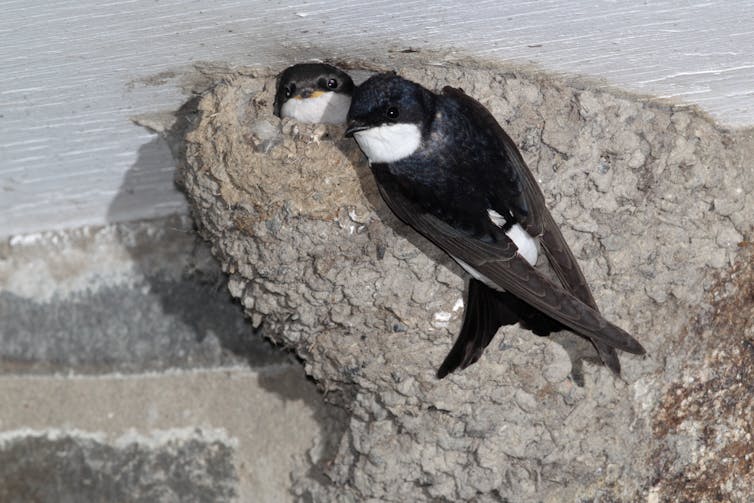Now that spring is in the air, the UK is starting to see its summer visitors arriving. Ospreys are already back in their nests, chiffchaffs are singing their song to re-establish their territories, and puffins have arrived at their breeding sites around the British Isles.
Several centuries ago, people believed that swallows spent the winter asleep at the bottom of ponds and lakes, or even on the Moon – but of course, that was complete nonsense.
We now know that animals migrate to increase their survival – and that of their offspring. It also helps in their quest to find food, a mate or to avoid predators.
Although we tend to think of migration as birds flying from one country to another, there are actually many animals who migrate. Wildebeest, for example, undertake a circular migration, roaming the African plains in huge numbers during the dry season in search of fresh grass. And humpback whales migrate to warmer waters to raise their offspring.
However, it is birds who are the record breakers when it comes to travel.
The bar-tailed godwit has the longest recorded non-stop migration, with one individual spending almost ten days travelling from Alaska to New Zealand without a break – that’s a huge journey of around 12,200km (7,580 miles).
But the Arctic tern is the true champion, making a round trip of 35,000km (22,000 miles) from the Arctic to the Antarctic and back again each year. This huge migration means that it lives in a constant summer – experiencing more daylight than any other animal – as it stops off in countries including Mauritania, Ghana and South Africa, during its global trek.
How birds find their way
Migration is a costly business – birds need to carry enough fat reserves to power their flight and sustain themselves over the duration of their journey. Getting lost could have disastrous consequences, so birds have developed incredible navigation skills to help them fly the shortest and safest routes.
Some species have an innate, inherited ability to migrate, which allows them to move to areas independently to enhance their survival.
The cuckoo, for example, is not raised by its parents as cuckoo mothers lay their eggs in nests belonging to birds of a completely different species. Yet, a young cuckoo is able to travel alone, from Europe to Africa, and back again, by using an inherited “internal GPS”.

Urcan Uk/shutterstock
But some species, like the Caspian tern – which undertakes a long-distance migration from its breeding home in northern Europe to its wintering location in Africa – have very little inherited basis to their migratory habits. In most cases, they are taught by their parents, also known as “cultural inheritance” or social learning.
A recent study, for example, found that young Caspians seem to learn their migratory route from their father, who carries the main responsibility for migrating with their young birds. Along the journey, he also shows them suitable stopover sites for refuelling with fish and crustaceans.
But, whether inherited genetically or socially, birds use a variety of natural cues, such as the shape of coastlines or the position of the Sun or stars –- or olfactory cues like the smell of their nest – to help them navigate their way around the globe.
Read more:
Birds use massive magnetic maps to migrate – and some could cover the whole world
Some birds, such as homing pigeons, even use a magnetic map to align themselves with the Earth’s magnetic field as they travel.
UK’s summer visitors
Our knowledge of bird migration has increased dramatically since the development of biologgers, tiny data-logging devices that are attached to the birds. These allow us to track an individual’s location, speed, stopover sites and the timing of their migration.
One such study is the cuckoo tracking project. This has revealed that several cuckoos left central Africa around the start of 2022, each travelling separately for hundreds of kilometres before stopping for a couple of weeks in countries including the Ivory Coast and Morocco. They then continued with the next leg of their journey, and the most northerly bird had reached France around the 10 April. These migrating cuckoos are expected back to their breeding grounds in the UK very soon.
And they are not alone. Many birds undertake long distance migrations to the UK for the summer breeding season. For example, the wheatear also winters in Central Africa, but is back in the UK much earlier, from late February to mid August, whereas the hobby – a predator of dragonflies – winters in South Africa and is in the UK from late April to October.

Erni/shutterstock
This enables them to take advantage of the longer hours of daylight and abundance of food, such as insects, during the UK’s summer months.
Read more:
Garden bird feeders are boosting blue tit numbers – but leaving other species hungry
If you’d like to help birds over their breeding season – and at the same time help other, more permanent avian residents, such as tits and sparrows – here are a few ideas.
Feeding birds nuts, seeds and household scraps such as pastry, fruit or cheese, will help to provide some easily accessible food.
But some species, such as house martins and swallows, rely on insects. So, enhancing the biodiversity in your garden by creating a wildflower meadow, or taking part in no mow May – an initiative from British conservation charity, Plantlife, asking everyone to “lock up their lawnmowers” and let vegetation grow during the month of May – will also be hugely beneficial.
Don’t forget that birds also need water, for drinking and bathing in, so a small bird bath or wildlife pond is ideal. You can also put up nestboxes to provide even more resources for our returning birds – an excellent substitute for the lack of natural nest sites for raising young, especially in urban areas.
Waking up to birdsong, courtesy of our summer visitors, including willow warblers and nightingales, brings joy to so many of us. Let’s not forget the epic journey they’ve taken to reach our shores – and do what we can to ensure a successful breeding season.
![]()
Louise Gentle works for Nottingham Trent University











